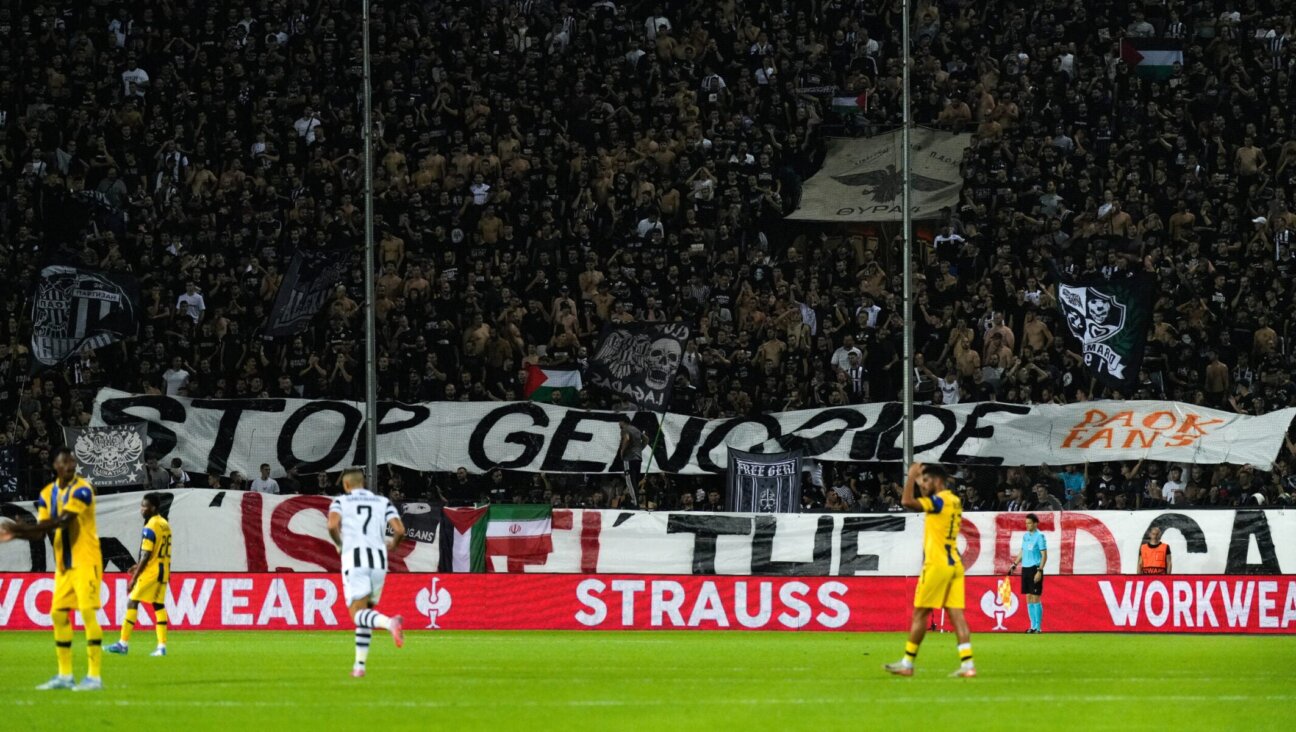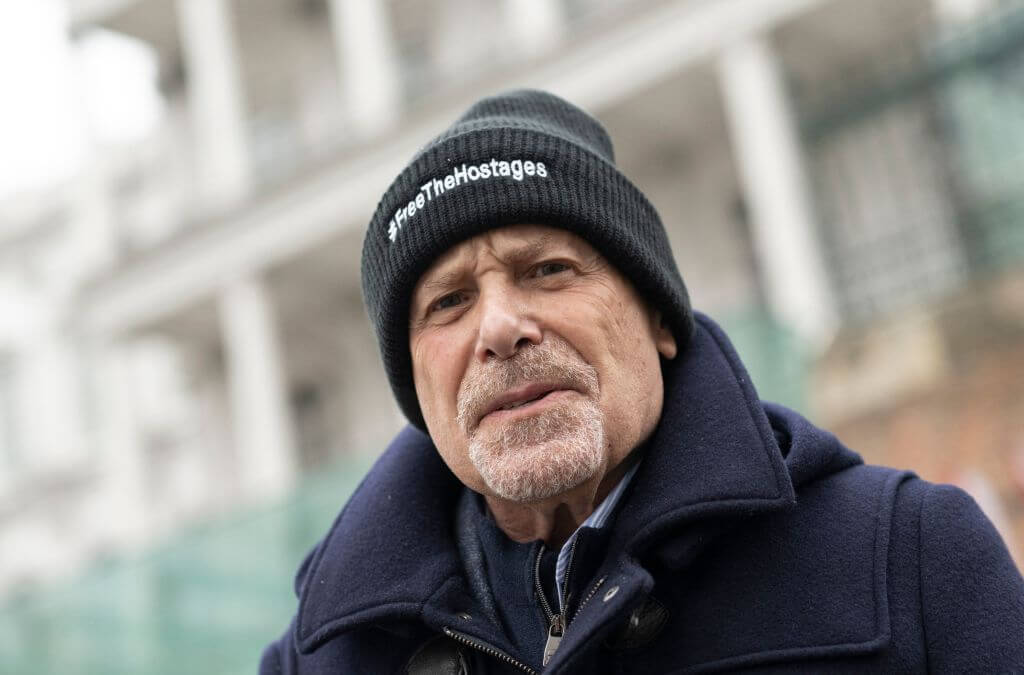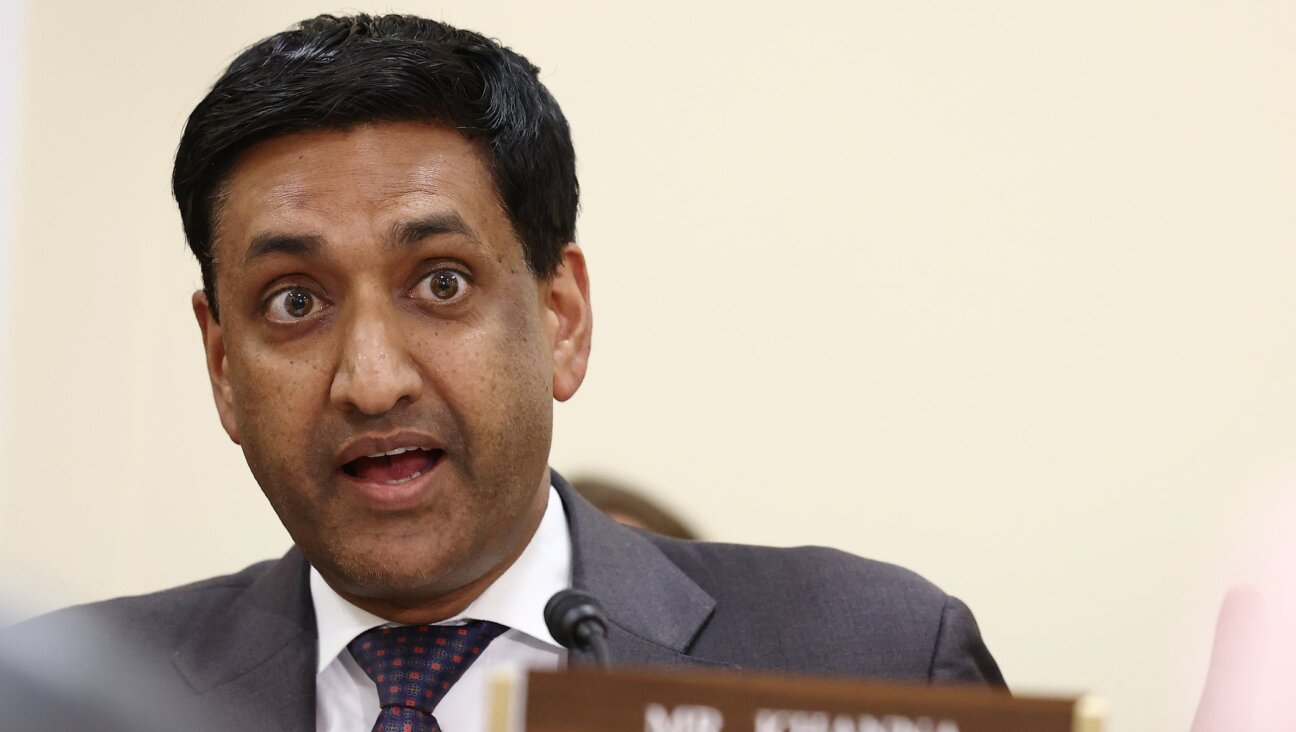Eizenstat’s Book Cover Is Target of Swiss Lawsuit
Sign up for Forwarding the News, our essential morning briefing with trusted, nonpartisan news and analysis, curated by senior writer Benyamin Cohen.
In the latest twist to the Holocaust restitution saga, the main American negotiator of a landmark agreement with Switzerland has become embroiled in a scandal over the cover of his recently published book.
A Swiss lawyer is suing Stuart Eizenstat, a former deputy treasury secretary in the Clinton administration, on the grounds that the jacket of his book “Imperfect Justice: Looted Assets, Slave Labor and the Unfinished Business of World War II” (PublicAffairs) bears a Nazi swastika made of gold bars superimposed on the white and red Swiss cross.
Eizenstat, meanwhile, is lashing back, saying the lawyer has ties to the Swiss right and has been investigated for fraudulent dealings with his clients.
The lawyer, Werner Stauffacher, claims the book cover violates a little-known 1931 law protecting the Swiss flag and other national symbols. He has asked a judge in Zurich to take action — either by fining Eizenstat or even arresting him.
Eizenstat, who is expected to attend the annual meeting of the World Economic Forum in the Swiss ski resort of Davos next week, said he was given assurances by the State Department that no drastic actions would be taken against him. He said he is planning to attend.
“This individual filed a petition against me but I was told the judge will not take the case up,” Eizenstat told the Forward.
Although the judge has not issued a ruling yet, Foreign Minister Brigitte Calmy-Rey recently said the matter was closed, marking a sharp turnaround on the part of the Swiss government.
Last month, Swiss officials expressed outrage upon learning about the cover of the American edition of Eizenstat’s book, which hit American stands on January 7. Then-foreign minister Joseph Diess ordered the Swiss embassy in Washington to seek ways to block the publication of the book.
But after Eizenstat publicly apologized, the idea was abandoned. This is when Stauffacher decided to act.
“After our foreign minister made his declarations and Eizenstat said he was sorry, I was angry because our government said it was over and did not dare to ask him to change the cover,” he said.
Eizenstat said he was surprised by the reaction since the cover had been presented eight months ago at the Frankfurt Book Fair. He lamented that the attacks on the cover were deflecting attention from the substance of the book, an account of his efforts to reclaim the stolen and confiscated assets of Holocaust survivors which culminated in a $1.25 billion settlement with the Swiss banks and government.
Since that time, Eizenstat has become a scapegoat of sorts for the Swiss who blame the country’s negative image abroad in recent years on American and Jewish attacks over the country’s wartime role.
Eizenstat, who is now a partner at the Covington & Burling law firm in Washington, contends that the lawsuit is “inspired by the far right” and that Stauffacher is the godfather of one of the children Christoph Blocher, the leader of the nationalist Swiss People’s Party. The party issued a scathing statement on the book last month, calling it “repugnant,” and arguing that the cover represented an unprecedented insult to Switzerland and asking the government to prevent Eizenstat from entering the country.
Eizenstat pointed to an April 2, 2000 article in the Swiss newspaper Sonntag Zeitung which alleges that Stauffacher has been investigated for document falsification, embezzlement and misappropriation.
Stauffacher denies the report. While admitting that he had “acquaintances” in the party, Stauffacher stressed he was not a member and had no far-right sympathies. He told the Forward that he was in fact a member of the Liberal party —a conservative party — and that his mother was Jewish, although he does not himself “feel” Jewish.
“In this case, I am acting as an independent lawyer,” he said, adding that he had paid some 25,000 Swiss francs — or $13,000 — of his own funds to file the lawsuit.
Stauffacher said his decision was prompted primarily by his frustration at what he sees as a marketing trick to sell more books. But he added that it was also a way to protest against the progress of the Holocaust restitution issue during the last decade.
“We have gone from one extreme to the other, from the Swiss National Bank denying any dormant accounts to those non-stop demands,” said Stauffacher, who added that he was one of the first lawyers involved in the restitution claims a decade ago and a supporter of the Swiss payments to the victims.
Alfred Donath, the head of the Swiss Jewish umbrella group, said he believed Stauffacher’s was an isolated action.
However, he added that the hostile reaction to the cover was widespread in Switzerland, where the frustration over the unrelenting criticism of the country’s wartime role is compounded by a strong anti-American feeling prompted by Washington’s bellicose stance on Iraq.
“Even Jews here were a little shocked,” Donath said. “As people who have long suffered from the ‘Jews equal money’ amalgam, seeing ‘Swiss equals Nazi’ is troubling.”
Eizenstat said the French and German publishers of the book who will distribute the book in Switzerland had designed different, more neutral, covers.
“I am sorry if I hurt some feelings,” he said. “But I would like people to focus on the book because it states a fundamental reality — that the Swiss national bank was the main repository of looted Nazi gold used to sustain the German war effort and did not change this attitude despite repeated warning from the Allies.”
















